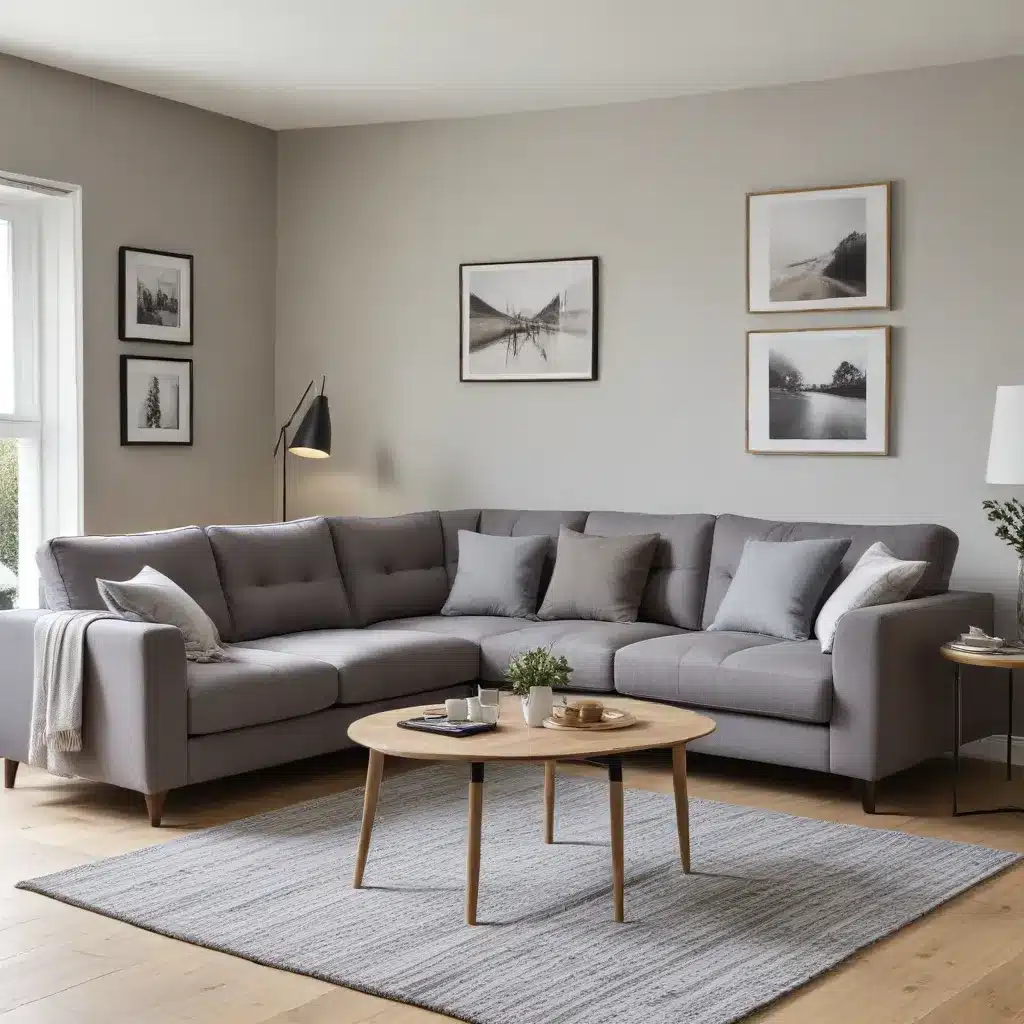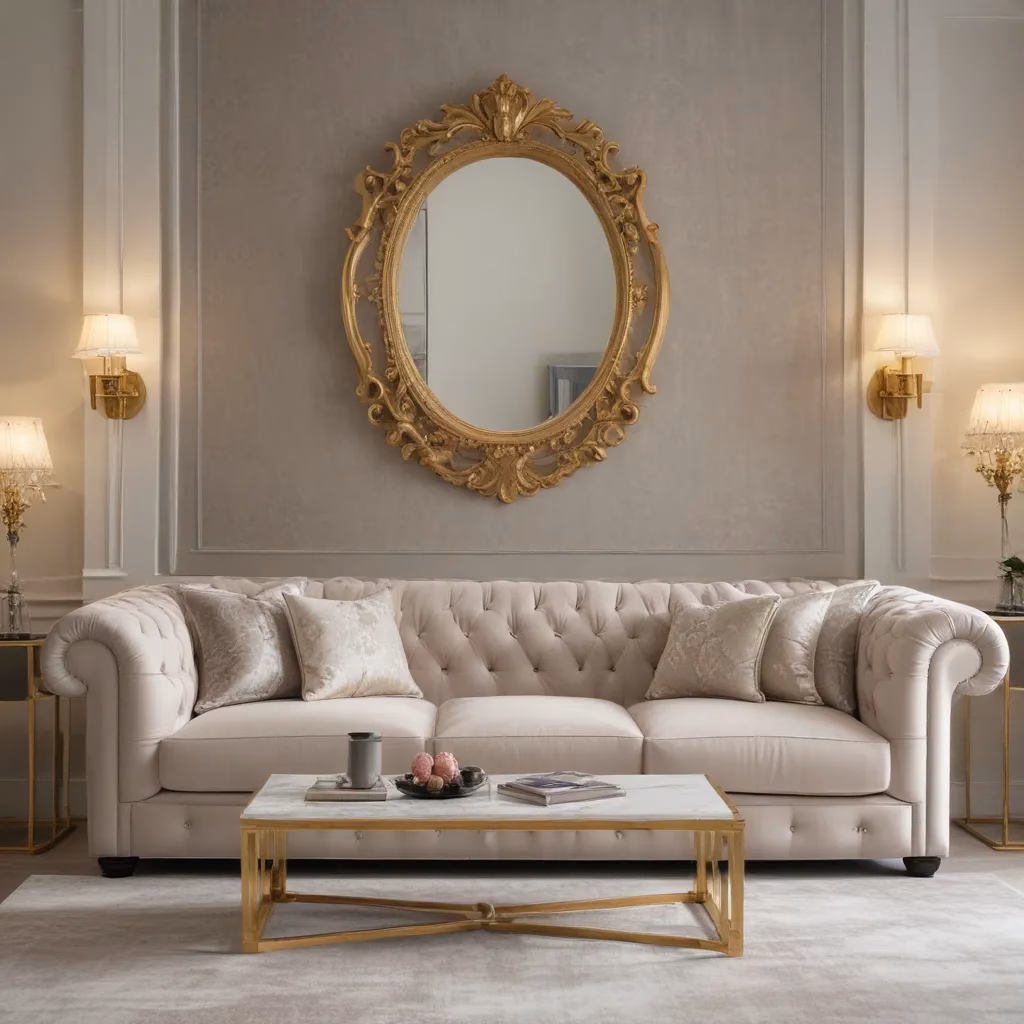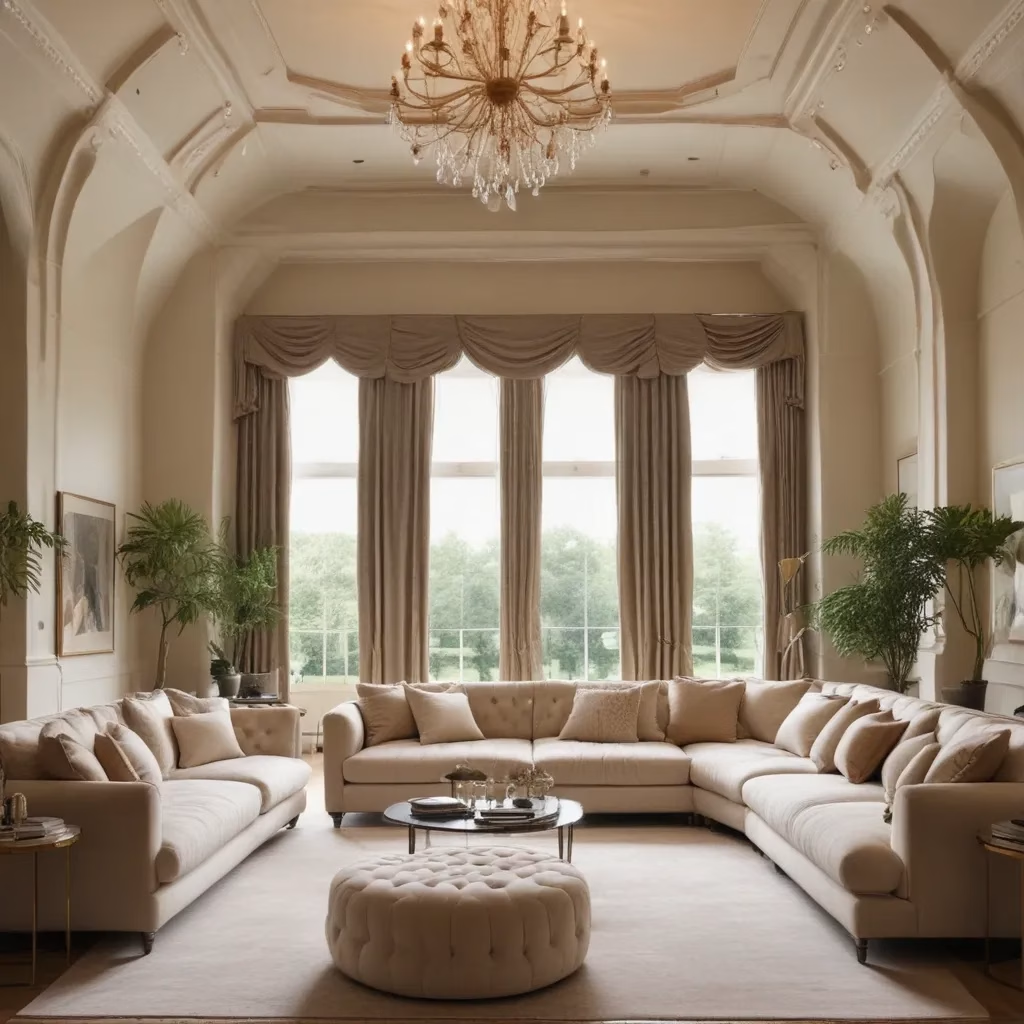
As a furniture specialist with years of experience, I’ve seen countless homeowners grapple with the challenge of choosing the ideal corner sofa. It’s a decision that can dramatically impact the look and feel of your living space, not to mention your comfort for years to come. In this article, I’ll share my personal insights and professional advice to help you navigate the world of corner sofas with confidence.
Understanding the Appeal of Corner Sofas
Corner sofas, also known as sectionals, have become increasingly popular in recent years, and for good reason. These versatile pieces of furniture offer a unique combination of style and functionality that can transform any living room.
When I first started in the furniture industry, corner sofas were often seen as bulky and outdated. However, modern designs have revolutionized their appeal. Today’s corner sofas are sleek, stylish, and incredibly adaptable to various room layouts.
One of the main advantages of a corner sofa is its ability to maximize seating in a given space. I’ve worked with numerous clients who were amazed at how a well-chosen corner sofa could comfortably seat their entire family while taking up less floor space than a traditional sofa and armchair combination.
Moreover, corner sofas create a natural focal point in a room, encouraging conversation and social interaction. They can define separate areas within an open-plan living space, effectively zoning your room without the need for physical barriers.
Assessing Your Space: The First Step in Sofa Selection
Before you even start looking at specific corner sofa models, it’s crucial to assess your living space. I always advise my clients to begin by measuring their room carefully. This step is absolutely essential and can save you from the heartache of falling in love with a sofa that simply won’t fit.
Here’s what you need to do:
- Measure the length and width of your room.
- Note the position of doors, windows, radiators, and any other fixed features.
- Consider the flow of traffic through the room.
- Decide where you want to place the corner sofa.
Once you have these measurements, you can start to visualize how different corner sofa configurations might work in your space. Remember, a corner sofa doesn’t necessarily have to be placed in a corner – it can also work well floating in the middle of a room to create distinct zones.
I once worked with a client who was convinced their room was too small for a corner sofa. After taking careful measurements and considering different layouts, we found a compact L-shaped design that not only fit perfectly but also made the room feel larger and more organized.
Choosing the Right Configuration
Corner sofas come in various configurations, and choosing the right one can make all the difference in how well it works in your space. The most common configurations are:
- L-shaped: These sofas form a right angle and are ideal for corners or for defining areas in open-plan spaces.
- U-shaped: Offering maximum seating, these are perfect for large families or those who love to entertain.
- Chaise end: These combine a traditional sofa with an extended chaise section, providing a luxurious lounging spot.
Your choice will depend not only on your room size but also on how you plan to use the sofa. For example, if you enjoy hosting movie nights, a U-shaped configuration might be ideal as it allows everyone to face the TV comfortably.
I remember helping a young couple choose their first corner sofa. They were torn between an L-shaped and a chaise end configuration. After discussing their lifestyle – they loved to relax with a book in the evenings – we opted for the chaise end. It provided the perfect spot for lounging while still offering plenty of seating when friends visited.
The Importance of Scale and Proportion
One of the most common mistakes I see homeowners make is choosing a corner sofa that’s either too large or too small for their space. A sofa that’s too big can make a room feel cramped and cluttered, while one that’s too small can look lost and fail to make the most of your space.
To get the scale right, consider the following:
- Leave at least 18 inches of walkway space around the sofa.
- Ensure the sofa doesn’t block any doorways or windows.
- Consider the height of the sofa back in relation to your room’s ceiling height.
- Think about how the sofa will look in proportion to other furniture in the room.
I once worked on a project where the homeowners had their heart set on a massive U-shaped sofa they’d seen in a showroom. However, when we measured their living room, it became clear that such a large piece would overwhelm the space. Instead, we opted for a more compact L-shaped design with clean lines, which complemented the room perfectly and still provided ample seating.
Comfort: More Than Just Cushions
While style and size are important, comfort should be your top priority when selecting a corner sofa. After all, this is where you’ll be spending countless hours relaxing, socializing, and perhaps even napping.
When assessing comfort, consider these factors:
- Seat depth: Deeper seats are great for lounging but may not suit shorter individuals.
- Seat height: This should allow you to sit with your feet comfortably on the floor.
- Back support: Look for a sofa with good lumbar support if you have back issues.
- Cushion filling: Options range from foam to feather, each offering different levels of support and maintenance requirements.
I always encourage my clients to spend time actually sitting on sofas before making a decision. What looks comfortable isn’t always so in practice. I remember one client who was set on a very stylish, low-profile sofa. However, after spending some time sitting on it, she realized it didn’t provide enough support for her back. We ended up choosing a different model with a higher back and firmer cushions, which she found much more comfortable for long periods of sitting.
Upholstery: Balancing Style and Practicality
The choice of upholstery can make or break your corner sofa, both in terms of aesthetics and longevity. This decision should be influenced by your lifestyle, personal style, and practical considerations.
Fabric options include:
- Cotton: Natural and breathable, but can stain easily.
- Linen: Elegant and durable, but wrinkles easily.
- Velvet: Luxurious and soft, but requires careful maintenance.
- Microfiber: Durable and easy to clean, ideal for households with children or pets.
- Leather: Timeless and easy to maintain, but can be cold in winter and hot in summer.
When helping clients choose upholstery, I always ask about their lifestyle. For a family with young children and a dog, I might suggest a durable, stain-resistant microfiber. For a couple who loves to entertain, a luxurious velvet might be more appropriate.
Color is another crucial consideration. While it’s tempting to choose a bold, trendy color, remember that a corner sofa is a significant investment. I usually advise opting for neutral tones that will stand the test of time and can be easily updated with colorful cushions and throws.
I once worked with a client who was hesitant about choosing a light-colored sofa due to her active lifestyle. We found a solution in a light grey fabric with a special stain-resistant treatment. This allowed her to have the light, airy look she wanted without constantly worrying about spills and stains.
The Role of Corner Sofas in Open Plan Living
Open plan living spaces have become increasingly popular, and corner sofas can play a crucial role in these layouts. They can help to define different areas within a large space, creating a sense of coziness without the need for walls.
When placing a corner sofa in an open plan space, consider these tips:
- Use the sofa to create a natural boundary between living and dining areas.
- Position the sofa to face the focal point of the room, whether that’s a fireplace, TV, or a beautiful view.
- Use rugs to further define the seating area and add warmth to the space.
- Consider how the sofa will look from all angles, as it will likely be visible from multiple viewpoints.
I recently worked on a project where we used a large L-shaped sofa to divide a spacious open plan area into distinct living and dining zones. The sofa acted as a natural room divider, creating a cozy seating area while still maintaining the open feel of the space.
Maintenance and Longevity
A corner sofa is a significant investment, and proper maintenance is key to ensuring it stands the test of time. Here are some tips I always share with my clients:
- Vacuum your sofa regularly to prevent dust and dirt from settling into the fabric.
- Rotate cushions periodically to ensure even wear.
- Address spills immediately to prevent staining.
- Consider professional cleaning once a year, especially for light-colored fabrics.
- Use arm covers and throws to protect high-wear areas.
I’ve seen many beautiful sofas prematurely aged due to lack of proper care. One client contacted me a few years after purchasing a corner sofa, concerned that it was looking worn. We discovered that she hadn’t been rotating the cushions, leading to uneven wear. After implementing a regular rotation schedule and having the sofa professionally cleaned, it looked almost as good as new.
Making the Most of Your Corner Sofa
Once you’ve chosen and installed your perfect corner sofa, it’s time to style it. Here are some ideas to help you make the most of your new piece:
- Layer with cushions in various sizes and textures for added comfort and style.
- Add a cozy throw for those chilly evenings.
- Consider a side table or two for placing drinks and books.
- If space allows, a footstool can add extra seating or a place to put your feet up.
- Don’t forget lighting – a floor lamp behind the sofa can create a warm, inviting atmosphere.
I always enjoy seeing how my clients personalize their corner sofas. One particularly creative homeowner used her corner sofa as a canvas for seasonal decor, changing out cushions and throws to reflect different times of the year.
The Future of Corner Sofas
As we look to the future, corner sofas are evolving to meet changing lifestyles and technologies. We’re seeing more modular designs that allow for easy reconfiguration, built-in storage solutions, and even integrated charging ports for devices.
Sustainability is also becoming a key consideration, with more manufacturers using eco-friendly materials and production methods. I’m excited to see how these trends will shape the corner sofas of tomorrow.
Final Thoughts
Choosing the perfect corner sofa for your home is a journey that requires careful consideration of your space, lifestyle, and personal style. By taking the time to assess these factors and explore your options, you can find a corner sofa that not only looks great but also enhances your daily life.
Remember, a corner sofa is more than just a piece of furniture – it’s the heart of your living space, where memories will be made for years to come. Choose wisely, and you’ll enjoy the comfort and style of your corner sofa for many years to come.
For more inspiration and expert advice on all things sofa-related, be sure to check out Sofa Spectacular. Happy sofa hunting!



